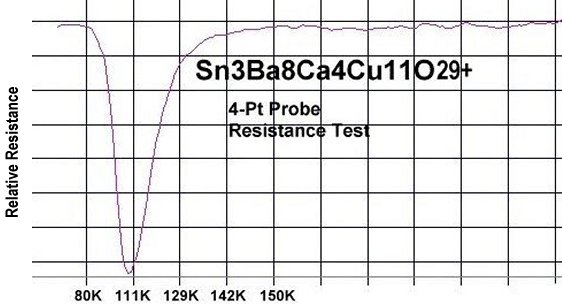

Superconductors.ORG herein reports the discovery of a copper-oxide superconductor that exhibits zero resistance at one - and ONLY ONE - temperature: 109 Kelvin. If confirmed, this would be the first compound to display a "resonant" superconductivity, where Cooper pairs form only at a specific temperature.
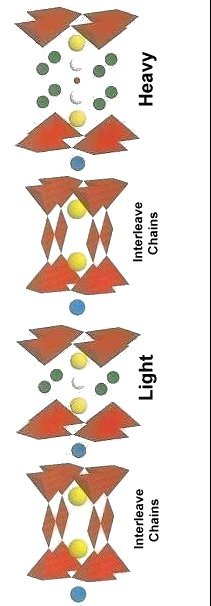 |
The structure of this material is a 3212/1212C/1212/1212C
intergrowth (shown at left) possessing the formula Sn3Ba8Ca4Cu11O29+.
As can be seen 1212C copper chains are interleaved with 3212 (heavy) and 1212 (light) tetragonal sub-structures to create
planar weight disparity across an unusually large unit cell.
Reentrant superconductivity (shown below) is a well-known phenomenon where, at a discordant temperature, superconductivity briefly disappears due to magnetic ordering state conflicts. However, in this new material, just the opposite occurs. It is the superconductive state that only briefly appears. 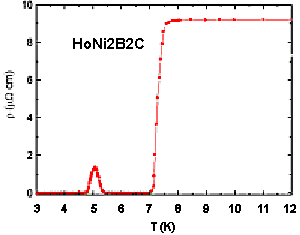 Prof. Robert J. Cava, head of the Princeton University Superconductivity Lab, observed that the change [in the plot at top] appears "too continuous with temperature to represent two separate phase transitions at different temperatures (superconductivity and magnetism)." In the below magnetization test, there is no clear diamagnetic signature at the point where resistance drops to zero. Only a small shelf is evident. However, other novel materials also fail to display accompanying diamagnetism at the resistive Tc. The ruthenates, for example, do not. A plot of an empty magnetometer is also shown to explain the negative slope below 96 Kelvin. |
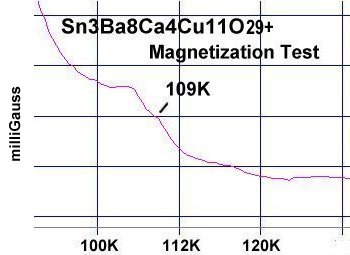
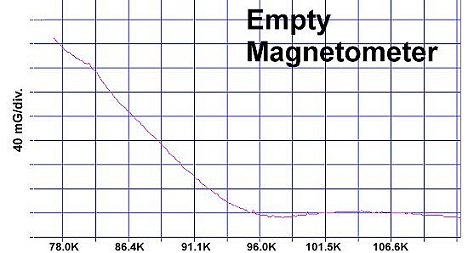
Synthesis of the material was by the solid state reaction method. Stoichiometric amounts of the below precursors were mixed, pelletized and sintered for 11 hours at 875C. The pellet was then annealed for 10 hours at 500C in flowing O2.
SnO 99.9% (Alfa Aesar) BACK to "News" page at Superconductors.ORG
BACK to "News" page at Superconductors.ORG